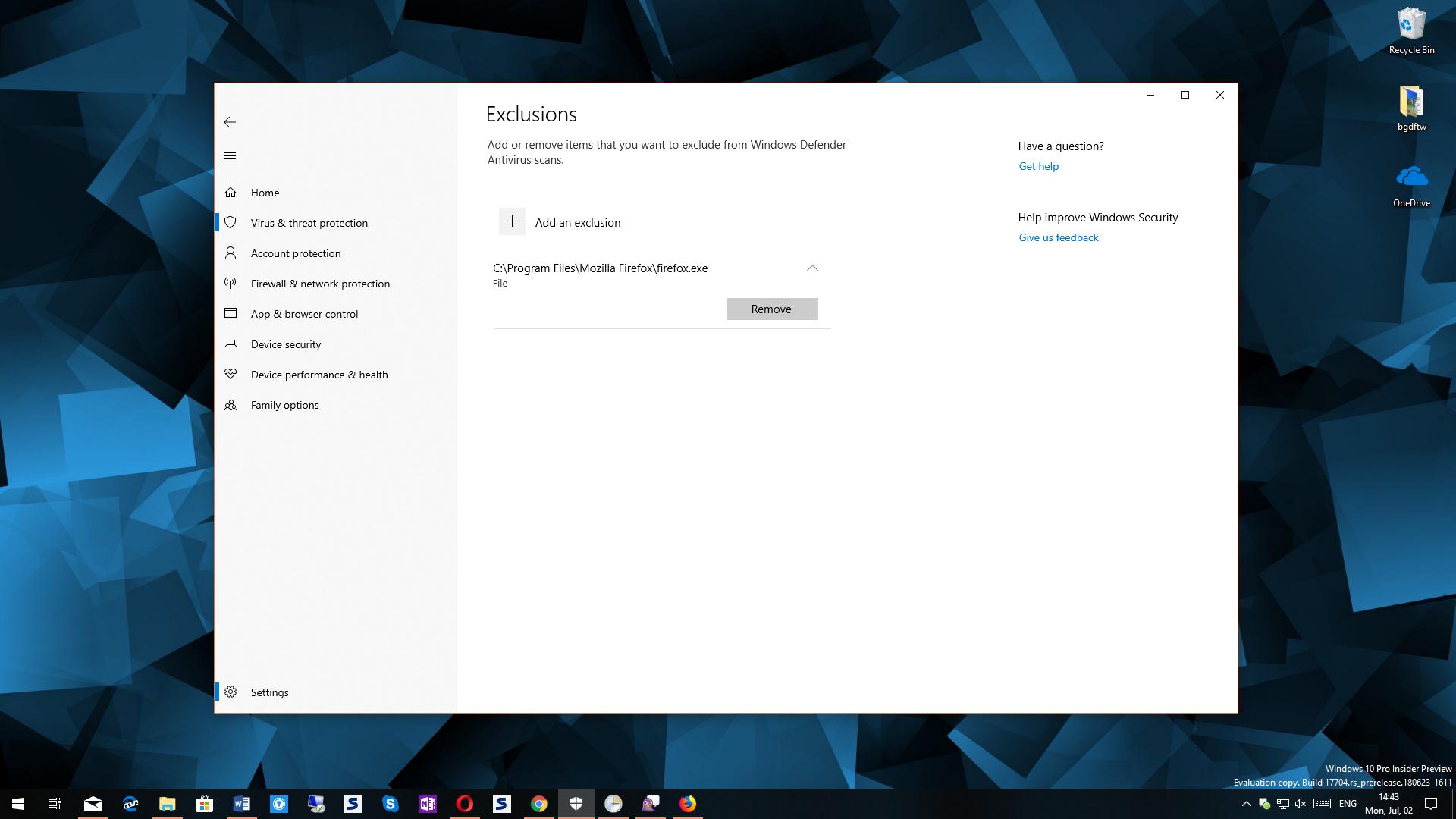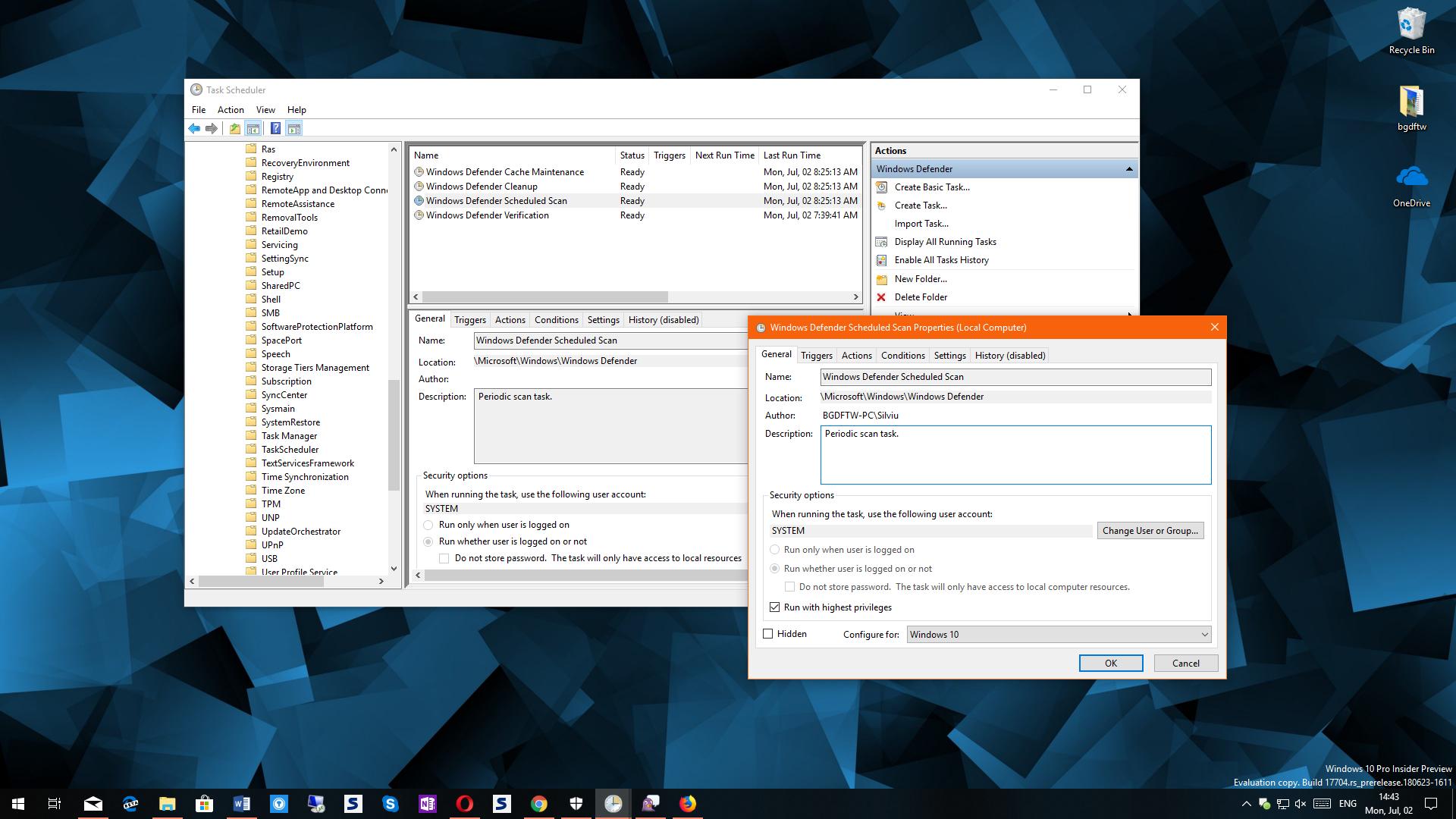Mozilla Firefox is currently one of the leading browsers worldwide, with third-party data showing that despite being well behind Google Chrome, it’s still considerably more popular than the Windows 10 default Microsoft Edge.
And this is basically no surprise. Mozilla has substantially improved Firefox in the last few years, and the browser comes with one of the most compelling feature packages right now. It’s fast, secure, and super-reliable most of the time.
Windows 10 users, however, might have found the hard way what a compatibility issue between Firefox and the operating system means in terms of performance impact. Because as it turns out, a several-months-old bug in Windows Defender antivirus causes high disk activity for Mozilla Firefox, obviously slowing down the system and affecting the browser’s performance.
The glitch was first reported on Bugzilla, Mozilla’s bug tracking platform, 4 months ago, but a fix still hasn’t been released. One Firefox user describes the problem:
“I noticed that for some time now most of the time Firefox is active, the Windows 10 built in `Antimalware Service Executable` is using well above *30% of my CPU*, and is reading and writing random files in ‘Windows/Temp’, all starting with ‘etilqs_’. This is considerably slowing me down and makes Firefox feel really slow.”
Right now, it appears that the said software compatibility issue is the one to blame for this slowdown, and without an official fix, users are all on their own to resolve it. Fortunately, a workaround does exist, even though it’s not the most convenient for everyone.
First and foremost, make sure that you are logged in with an administrator account because we’re going to make system changes that wouldn’t otherwise be allowed with a standard account.
The first thing you have to do is set an exclusion for the main Mozilla Firefox process in Windows Defender, so that the antivirus would ignore it in future scans. To do this, launch Windows Defender Security Center from the system tray and head over to the following path:
Virus & threat protection > Virus & threat protection settings > Manage settings > Exclusions > Add or remove exclusions > Add an exclusion > File
Then, you need to navigate to the installation folder of Mozilla Firefox and select the firefox.exe process. If you use the default settings, the process is located at:
C:\Program Files\Mozilla Firefox\firefox.exe
The firefox.exe process should then show up in the excluded file list, so you can remove it at a later time (e.g. when Microsoft fixes the compatibility issue in Windows Defender).
Next, you need to disable an option called Run with highest privileges in the Windows Defender scheduled scans. This isn’t possible from the Windows Defender settings screen, but from the Task Scheduler, where the antivirus has automatically created its own tasks to run scheduled scans.
Launch the Task Scheduler from the Start menu by simply typing its name and then navigate to the following path:
Task Scheduler Library > Microsoft > Windows > Windows Defender
In the right side of the screen, double-click the item that is called Windows Defender Scheduled Scan and in the lower part of the UI, uncheck the option that reads Run with highest privileges and then click OK.
A reboot isn’t necessary, but I’ve seen people claiming that the high disk usage stopped when the operating system loaded once again. In some cases, disk usage dropped to 3 percent after making these changes, which is a substantial improvement given that in some cases, it reached 30 percent with the original settings.
Time will tell how fast Microsoft and Mozilla will prepare a fix for this bug, and we’ll update this article when it becomes available.

 14 DAY TRIAL //
14 DAY TRIAL // 





